










HUNTERS - EMBRACING CAMARADERIE, NATURE AND CONSERVATION
Sponsored by UDFOM
KEEP YOUR DEER HERD ORGANIZED WITH A PROFICIENT TAGGING SYSTEM
Sponsored by KALA
MEDGENE LABS
Looks to Unveil Prescription Platform
Vaccines for Use in White-tailed Deer in 2026
Sponsored by MDA


Brown, now able to release every bottled-up emotion, cried. Cried physical pain. From relief. From satisfaction. Satisfaction that was now interrupted by another urgent matter. Romey, the dog seized by the mountain was bleeding badly and needed urgent vet care. “We’ve got to get him the vet,” the guide said, with a tone different than the one used earlier order a gunshot. Brown jumped up, grabbed Romey and literally slid on his buttocks further down the side of the mountain, landing in a creek next to

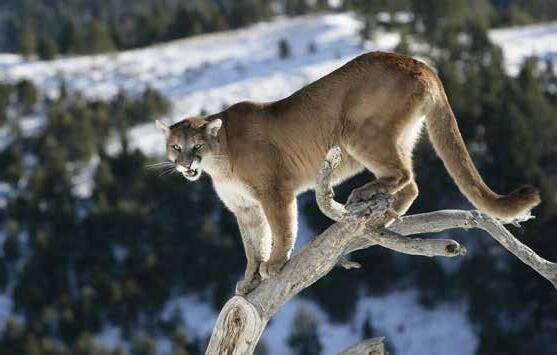

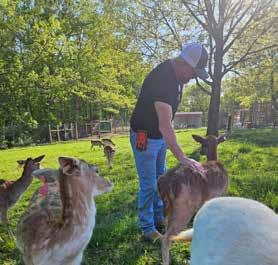

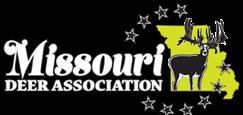

Amy Nold (‘26)
President Nold Farms LLC 51 SW 1501 RD Urich, MO Henry 64788 660-492-0215 noldfarmsllc@yahoo.com

Nick Forsythe (‘27)
Secretary / Treasurer
Corner Stone Whitetails 25710 Hwy C Bland MO 65014 573-418-8350 cornerstonewhitetails@gmail.com
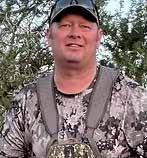


Matt Kirchner (‘25)
Missouri Whitetails 29158 Hwy. C Alexandria, MO 63430 660-341-0554 mkirchner32@gmail.com

Sean Combs (‘27)
Tall Tine Whitetail Ranch 697 Blackjack Trail Mountain Home, AR 72653 870-450-2736 sean@mallardresort.com

Donald Hill (‘27) Oak Creek Whitetail Ranch 178 Oak Creek Ln Bland, MO 65014 573-943-6644 donald@oakcreekwhitetailranch.com

Bradley Lueckenhoff (‘26) Vice President Little Flat Creek 200 Washington St Suite 4 Purdy, MO 65734 417-342-2516 bradjlueck@gmail.com
Bradley Puff (‘26)
High Adventure Ranch 308 Mikel Ave St. Louis, MO 63043 314-578-4590 bpuff@highadventureranch.com
Jeni Haddock (‘25)
Walleye Whitetails 7751 Walleye Rd Pierce City, MO usa 65723 417-316-1059 jeni.haddock@gmail.com
Nathan Blosser (‘27)
Blosser Whitetails 4515 South 250th Rd Buffalo, MO 65622 417-327-4670 417-327-9590


Karla Kretschmer
President
AB Whitetails 2052 Nation Rd Chetopa, KS 67336 620-920-0578
karlakretschmer@outlook.com
Kevin Constant Treasurer
K&D Wildlife 4193 Clark rd. Meriden, KS 66512 785-224-8889 kanddwildlife@gmail.com
Joe Bisogno, Jr.
Vice President
Timber Hills Lake Ranch 1369 Valley Road Mapleton, Kansas 66754 785-210-6412 joebisogno@yahoo.com
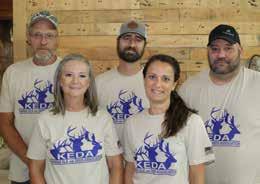
Jake Lamb 2nd Vice President
Sand Creek Whitetail 10865 School Creek Rd Saint George, Kansas 66535 785-458-9100
sandcreekwhitetail@gmail.com
Becky Comption Secretary
Becky Compton
BRC Fallow Deer 10461 SW Hopkins Switch Rd Augusta, KS 67010 Phone: 785-313-0912
brcfallowdeer@yahoo.com




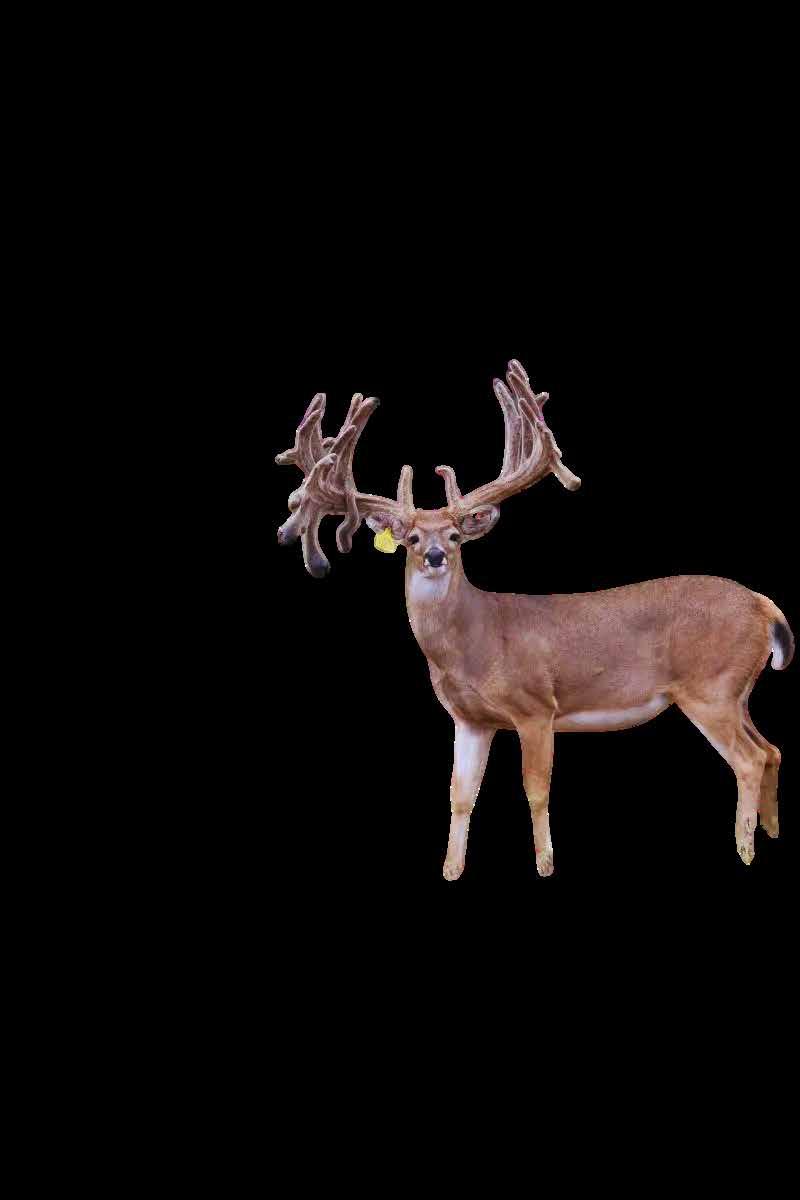



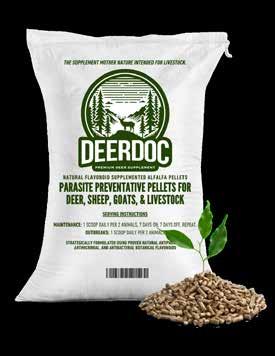


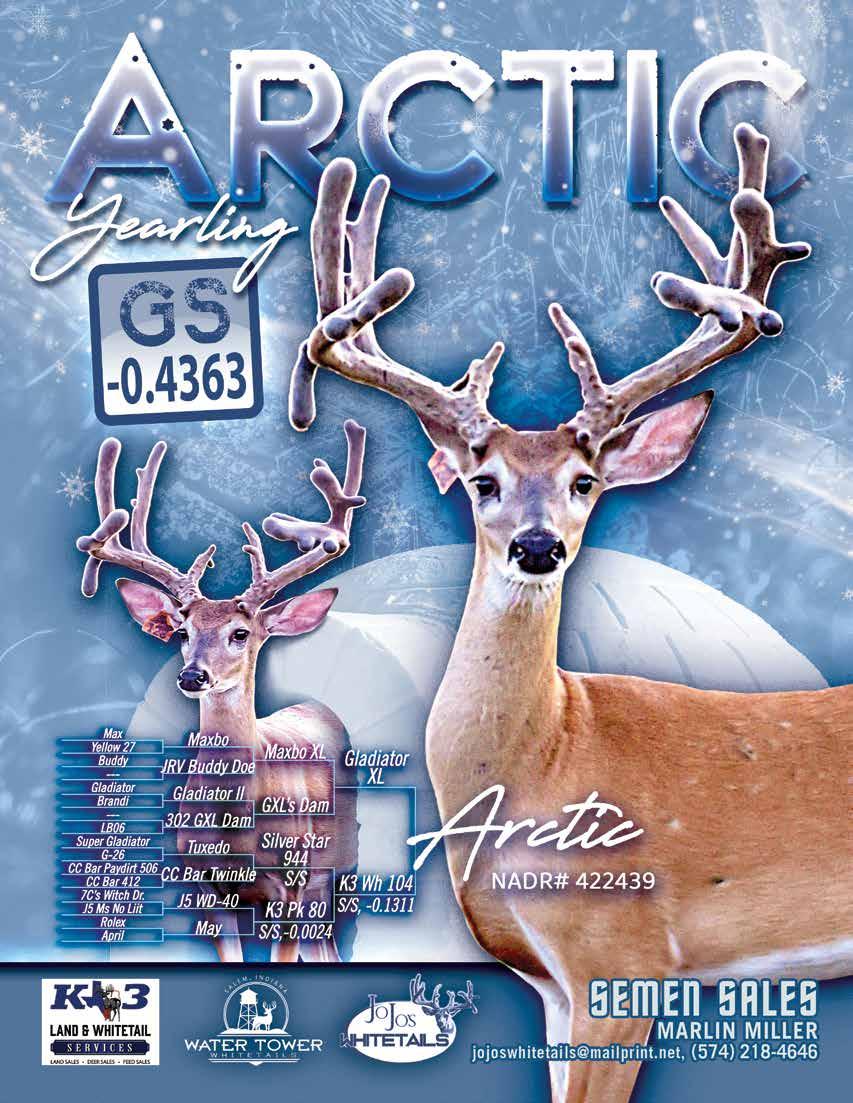

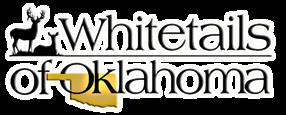

Chris Ezell President Dangerous Whitetails of Oklahoma 7134 W. 420 Rd Chelsea, OK 74016 918-697-5389 chrisezell@rocketmail.com

Amy Nold Secretary Nold Farms LLC 51 SW 1501 RD Urich, MO Henry 64788 660-492-0215 noldfarmsllc@yahoo.com


Tim Condict Flying Eagles Ranch 23455 FR A51 Hodgen, OK 74939 214-549-9963 timcondict@gmail.com


Mike Charlton
Riverbend Trophy Whitetails 3616 Boston Pool Rd. Hominy, OK 74035 Mkbs5484@icloud.com 918-430-5484


Joe Smith 14421 Buggy I Jones, OK 73049 405-696-3880
Kevin Wallace Treasurer Wallahachie Whitetails PO Box 28 Wellston, OK 74881
Doug Varner Double D 6925 Winchester St Dallas, OK 75231
Keith Day Atypical Whitetails PO Box 821 Sperry, OK 74073
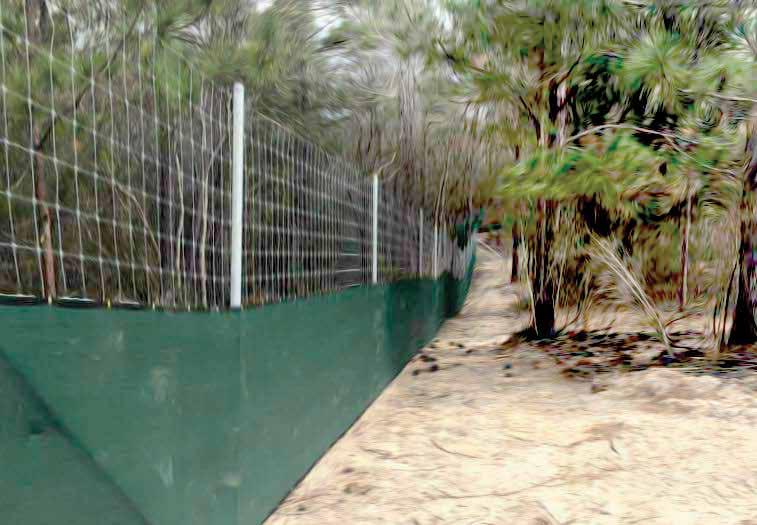





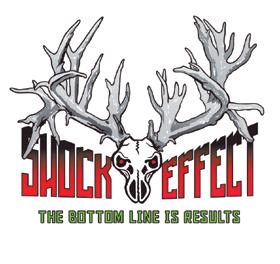















Afish fry, a farm tour, some healthy competition and deer friends made for another amazing KEDA Summer Picnic. The Deer Industry was represented with deer farmers from Oklahoma, Missouri and all across Kansas in attendance. AB Whitetails (Karla & Mike Kretschmer) hosted our 2025 KEDA Summer Picnic near Chetopa, KS. Even though it was a hot summer day everyone had a great time. AB Whitetail’s is a beautiful farm full of spectacular whitetails including several eye-catching piebald and two sweet little bottle babies. A huge thank you to Karla and Mike!
Many tried but there can only be one winner, Dr. Drew Crissler was the winner of the Pneu-Dart competition. But he wasn’t the only one to head
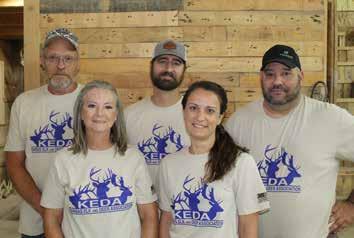

home with something special, many door prizes were donated and given away at the end of the day and everyone went home with KEDA 5 gallon buckets and t-shirt.

We can’t wait to see everyone again at the conference at Acorns Resort in Milford, KS. Mark your calendars for February 28th, 2026.
Becky Compton BRC Fallow Deer 785-313-0912
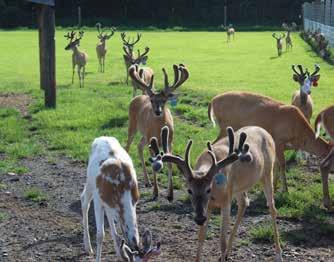
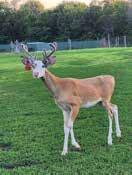
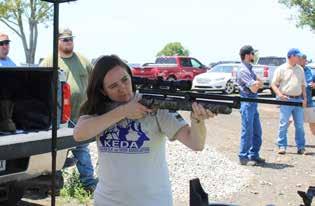

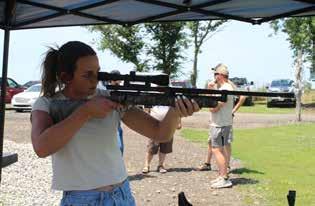




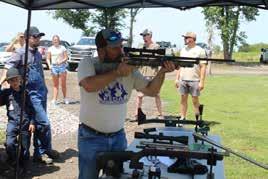











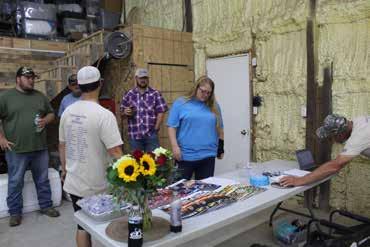








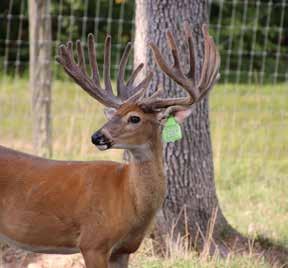


Abig thank you to all who attended The Missouri Deer Association Annual Picnic.
Despite sweltering temperatures in the mid 90’s, we had a great time on Saturday, August 16th at Knibb Whitetails in Union, Missouri. We feasted on a spread of smoked pulled pork, fire roasted corn and black diamond watermelon topped off with homemade ice cream in two flavors. Joseph Lolli gave a brief presentation featuring such products as Shock Effect and Buck Chill. President Amy Green-Nold held a business meeting and discussed proposed changes to the wildlife inventory system as well as updates in the research and development of a CWD blood test.
Dr. Jeff Knibb presented two case studies demonstrating that antibiotics aren’t always what a sick deer might need. Adults enjoyed conversing and taking farm tours in a side-by-side. Kids in attendance, meanwhile, set off smoke bombs, took a trailer ride through the woods and fields, waded in the Bourbeuse River and herded one another through the handling facility tunnels. Overall, it was an enjoyable experience, and we are looking forward to next year’s picnic at Fawndoebucks


Whitetails in Clark, Missouri, where I hope to wrangle a percussion concert out of our highly talented host, Greg Kasner.
“I’m grateful for the very nice gathering at Knibb Whitetails for the annual Missouri Deer Association Picnic,” said President Amy Green-Nold. “Thank you to all of our members who took the time to come. Having in-person meetings with producers is key for sharing updates in regulations and industry needs. We look forward to seeing you next year and strongly encourage every member to participate.”

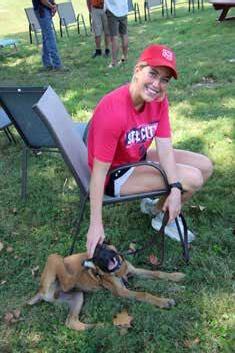
















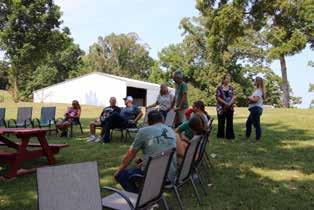

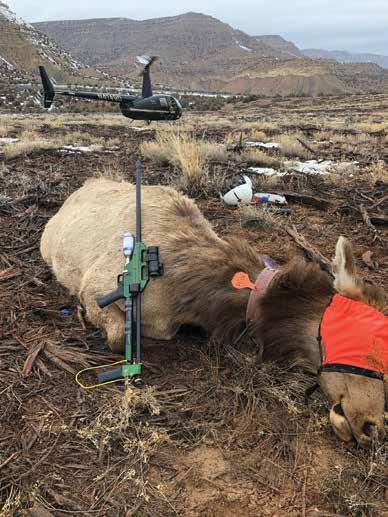




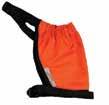










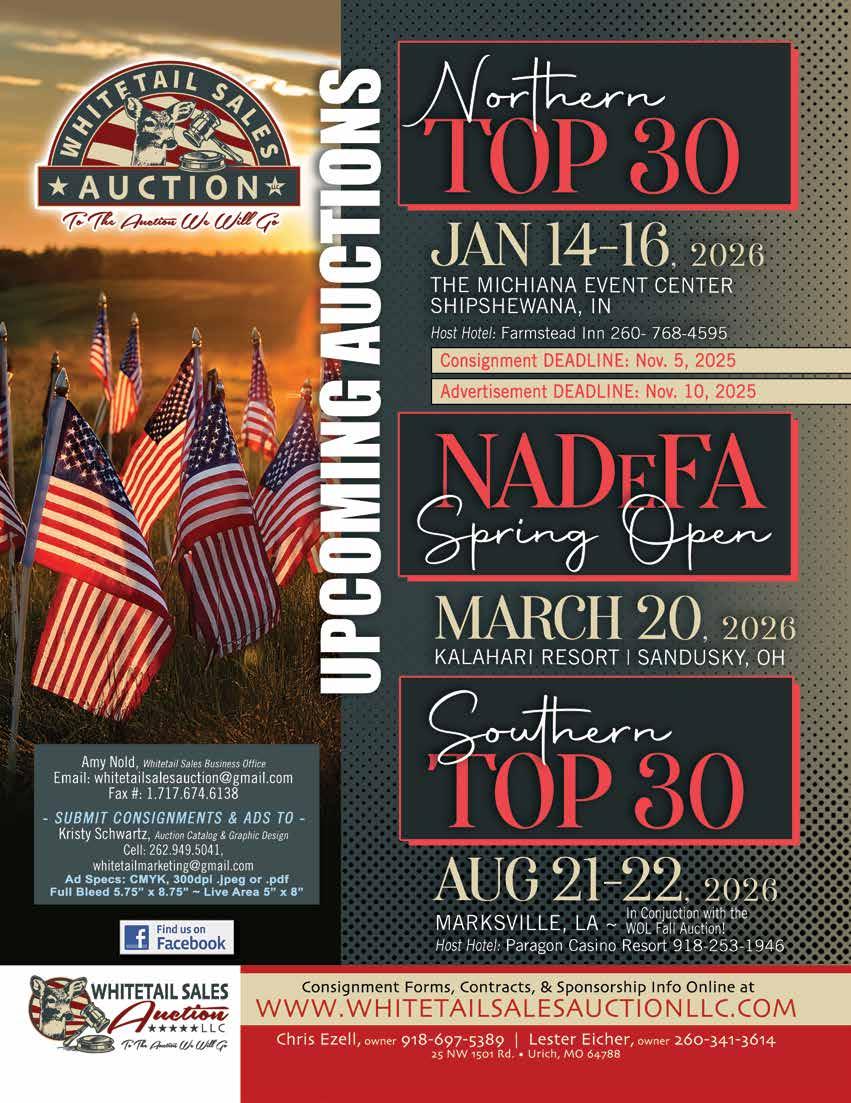

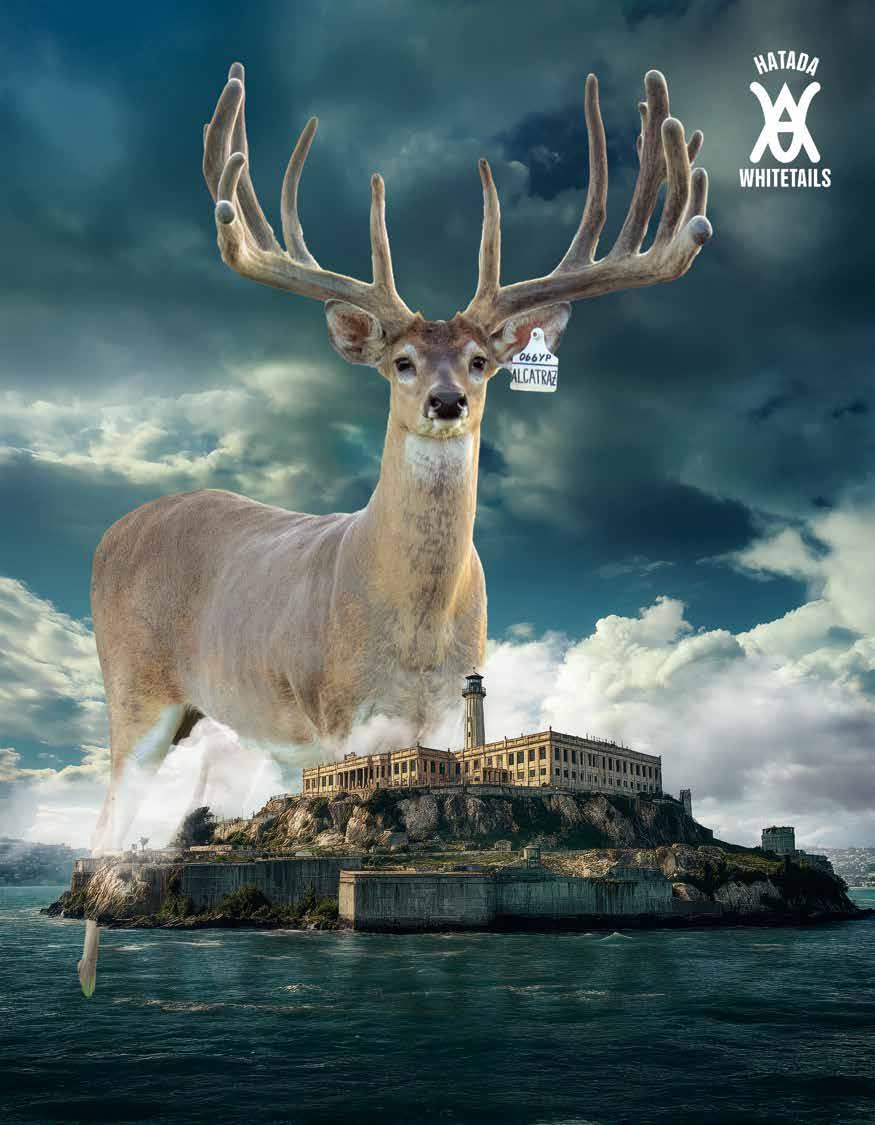


By: Gail Veley
Spend just a moment talking with Jeff and Heather Haas about their cervid farm, Haas Fallow Deer Farm in Warrenton, Missouri, and it’s more than apparent that they love what they do. They are absolutely head-over-heels for fallow deer. So much so, they only raise fallows on their 20-acre deer paradise currently home to approximately 35 deer. Having started Haas Fallow Deer Farm in 2023, Jeff initially was dead set on raising whitetails. However, Kevin Grace inspired Jeff and Heather to consider raising fallow deer.
“When we visited his deer farm, he asked us how we felt about exotics and suggested fallow deer to spread the risk out a little bit,” Jeff commented. “Being new to the deer industry, we didn’t know exactly what he meant when he said that fallow would lessen our risk. After getting to know many of the whitetail farmers and some of the trials and tribulations they deal with regarding EHD and such, we now know what Kevin was talking about. We have also found that the regulations to raise them are much better than they are for raising whitetail deer. We feel we have a good, open and honest relationship with the Dept. of AG and we can contact the state veterinarian any time with questions.” Another tremendous benefit they have found to

be true of fallow is how hardy they are. They do not contract CWD or EHD and are generally easy keepers. “Unless we are doing something specific such as cutting antlers or selling an animal, most of our deer have never been run through a chute or darted since they have been on our place,” Jeff said. “Now, we are so glad we decided to raise fallow. It’s been just the right fit for us.”
Success at Haas Fallow Deer Farm has also come by the way of others who have helped them along the way, such as Jeff and Amy Nold of Nold Farms in Missouri. They put Jeff and Heather in touch with Chris Ezell, who had the high-quality genetics on his farm that they were looking for. “Through Chris, we have purchased several bucks and does from Lance Clawson and Jason Millegan, including Red Bull, a beautiful breeder buck featured on Keith Warren’s show when he was two years old. He will be four this year and we are very excited to see how he grows out”.
One main objective of the Haas’s is to raise bottle fed does with top notch genetics, finding that bottle fed deer add tremendous calm to the herd and make raising them enjoyable. Having two fawning seasons under their belt, including raising an abandoned fawn

who briefly lived on their couch with a diaper, as well as having to deliver another fawn by turning, twisting, pulling and literally swinging him from his hind feet to help draw air into his lungs, Jeff and Heather are ready for what may come. Today, Jeff affectionately calls the abandoned fawn “Couch Tater.” Amusingly, the other fawn always seems to be on the lookout for Jeff. “Anytime of the day or night when I go out into the deer pens, he barks and barks at me,” Jeff shared. “I call him Dart.”
Like a majority of deer farmers in the industry, Jeff’s reverence for deer began when he hunted his first whitetail deer at the young age of 16. “When I was 11 or 12 my best friend and I would go rabbit hunting and spend the night on his farm,” Jeff said, reflecting on a passion that long ago then extended to whitetails, and today is alive and real through a love of fallow deer. Grateful to be a full-time deer farmer, Jeff looks forward to when Heather retires from her full-time job as a banker and joins him. Check out Haas Fallow Deer Farm on Facebook! And pay close attention to the logo – courtesy of their 10-year-old granddaughter Taylor!


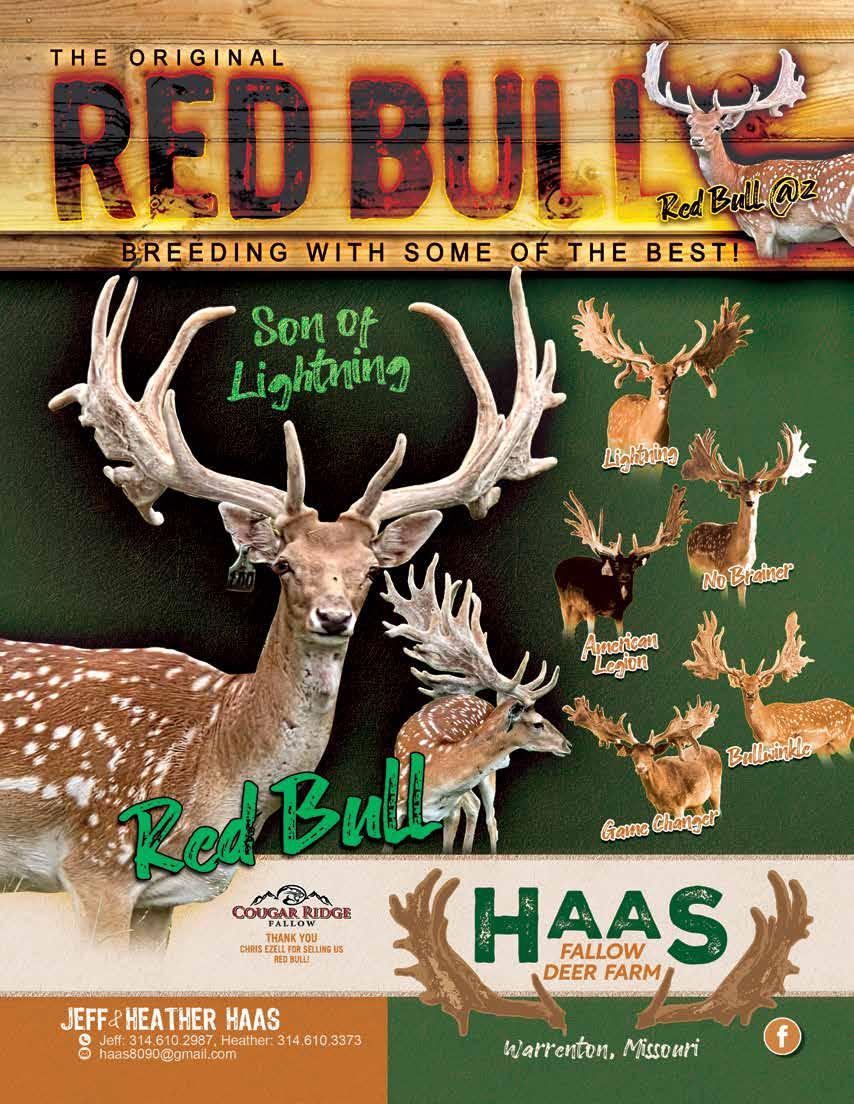
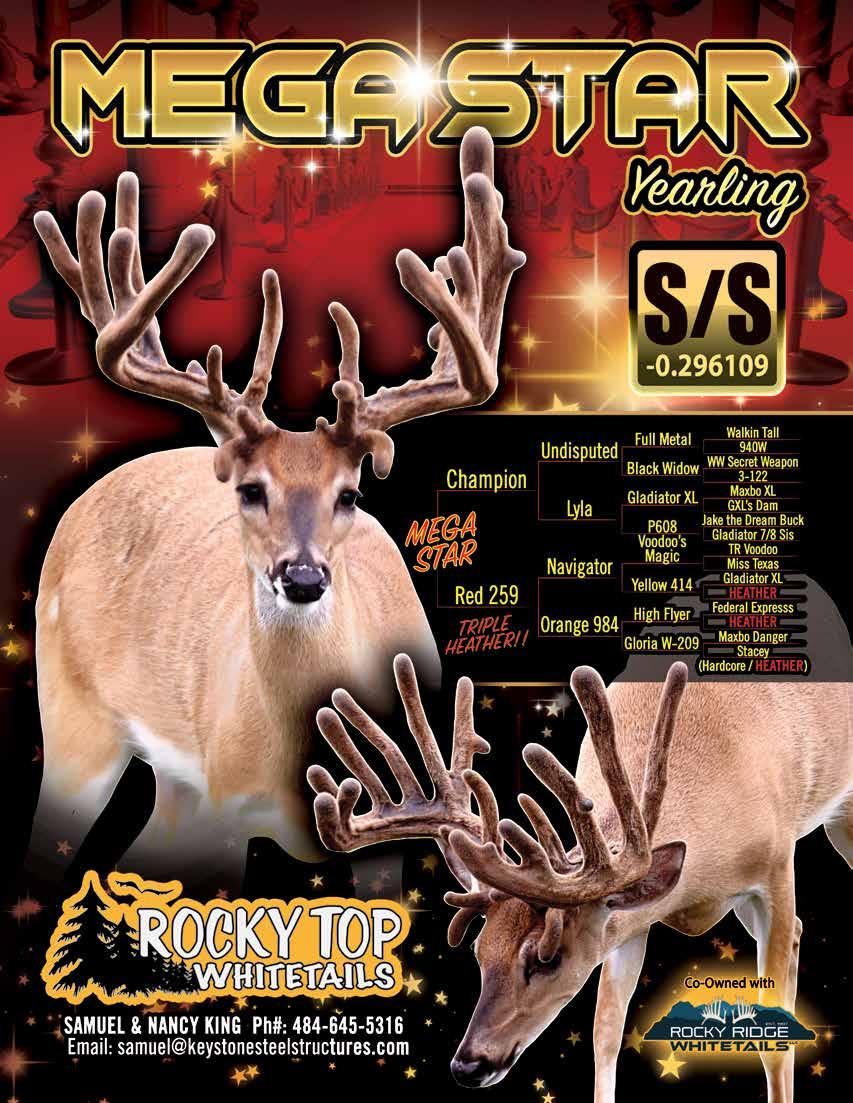







By: Gail Veley • Sponsored by The Missouri Deer Association
Deer farmers can feel optimistic about vaccine advancement by Medgene Labs in Brookings, South Dakota. If all goes according to plan, the prescription platform for whitetailed deer will be available in 2026. This will allow Medgene to offer more than an EHD vaccine to deer farmers, specifically an option to vaccinate against some strains of bluetongue. Bluetongue, an often fatal virus closely associated with EHD, is caused by the same vector, the Culicoides midge fly. Symptoms include fever, swelling of the head, neck and tongue, lameness, a loss of the fear of humans and the desire to be near water. Although Medgene Labs has a vaccine for EHD, they felt the need to expand to a prescription platform in whitetails because a specific bluetongue vaccine was just as necessary, said Medgene Labs Immunological Services (I.S.) Prime Director Ashley Petersen. “While bluetongue is very similar to EHD, having a vaccine specific to both is another part of a toolbox in overseeing the health and well-being of your deer,” she explained.
In order to test the safety of the prescription platform technology, a
vaccine Safety Study was conducted after four farms, one located in South Dakota, one in Oklahoma, one in Missouri and one in Ohio, agreed to allow their herds to participate. The study evaluated how safe the vaccine appeared for the target species (white-tailed deer) and recorded all reaction events that may have happened after an injection such as limping, soreness or not eating. Medgene’s currently available EHDV2&6 vaccine is manufactured differently than the methods used in the prescription platform system. Though the immune response is robust, “it didn’t matter if it was administered IM or SQ, the deer would be lame afterwards,” said Amy Nold of Nold Farms, LLC in Urich, Missouri. “I would say this new vaccine formulation shows great promise. Lameness is much less significant. I think it allows for more confidence while not inhibiting production.”
In addition, Nold felt there wasn’t a difference between how the does or bucks responded to the vaccine. Vaccines were administered starting December 16th, 2024, and followed up with a booster on January 4th, 2025. Every farm that participated
reported their observations back to Medgene Labs, who upon receiving the results, prepared and submitted a report to The Center for Veterinary Biologics, a division of the USDA located in Ames, Iowa. The center, which works to assure that safe and potentially effective veterinary biologics are available for the ultimate treatment of animal diseases, will more than likely need three to four months to review the report, Petersen said. Should the vaccine platform for use in whitetailed deer be given the greenlight, it will join others that subsist under Medgene Lab’s Prescription Platform License and will contain a “label claim” listing potential side effects. “I’m willing to use this vaccine on all of my deer,” said Nold, whose herd numbers exceed 200 head. “I say the risk is worth the reward in seeing our deer grow and in learning about and caring for one of God’s most wonderful creatures. Anytime you have an opportunity to participate in research, it’s always a pleasure and an honor.”
































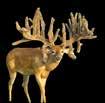





NADR#




NADR#

DTW G IV
DTW Yellow 444



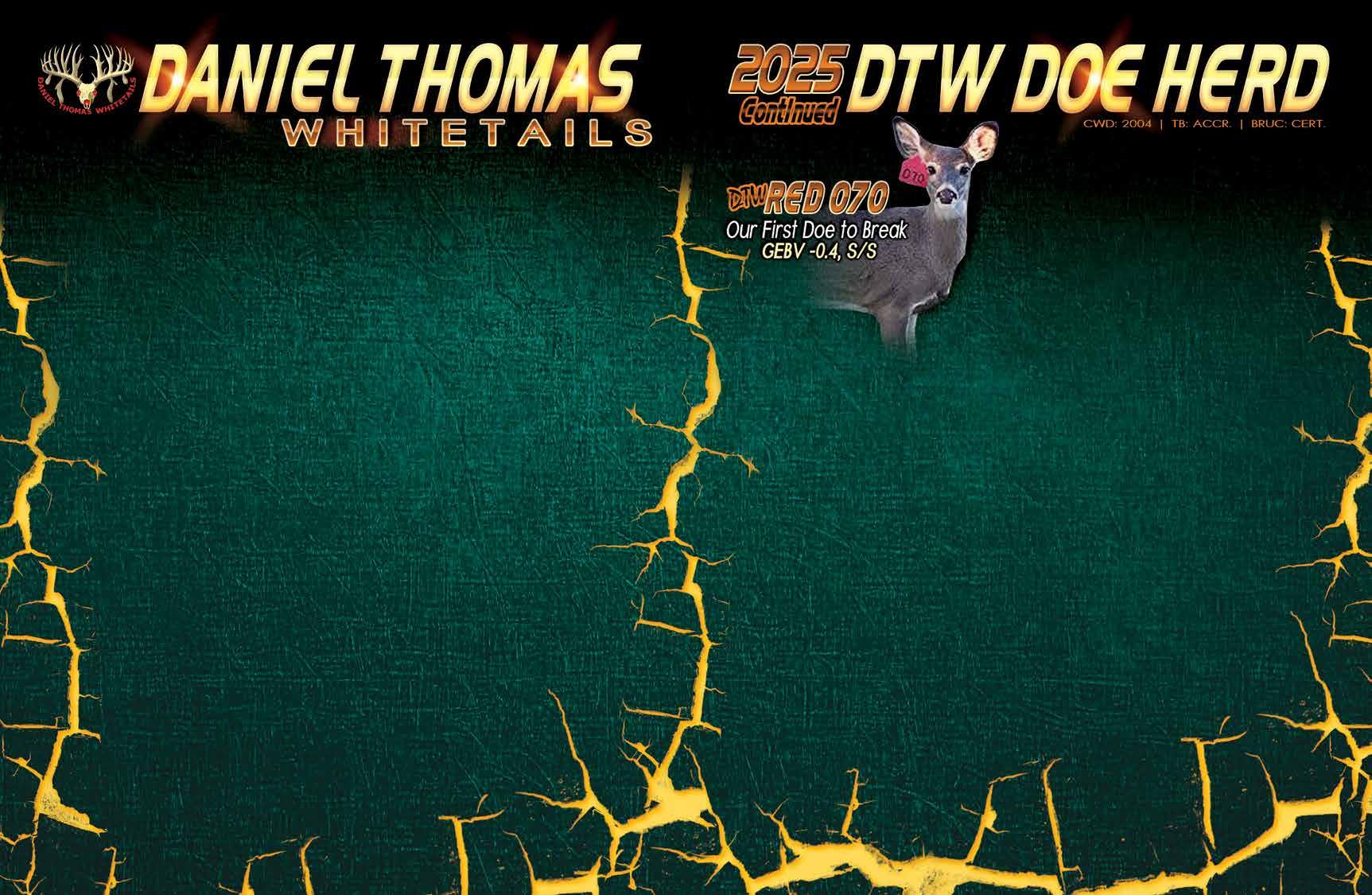
DTW
DTW


DTW
DTW
DTW Yellow 277

DTW
DTW
DTW

DTW
DTW




DTW G IV
DTW Yellow 213

DTW G IV
DTW Red 13

DTW
DTW Yellow 83

DTW G IV
DTW Red 83
DTW

DTW Red 269


DTW Red 502

DTW Red 301





DTW Red 213

Mr.



















“

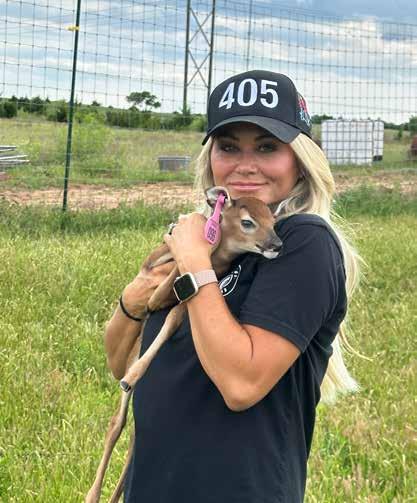



If you would like your farm or business featured on our business card pages, email digital pdf file or scanned image (must be readable resolution) of your business card to:
Meagan Lewis for Oklahoma members: mjlewis2020@icloud.com
Karla Kretschmer for Kansas and Missouri members: karlakretschmer@outlook.com
This gives Tri-State members a way to reach out to one another for services and to buy or sell deer! There will be limited pages for these cards, the overflow would be placed in the next issue and cards will be rotated each quarter.
If you have any questions please contact Kathy Giesen: 435-817-0150







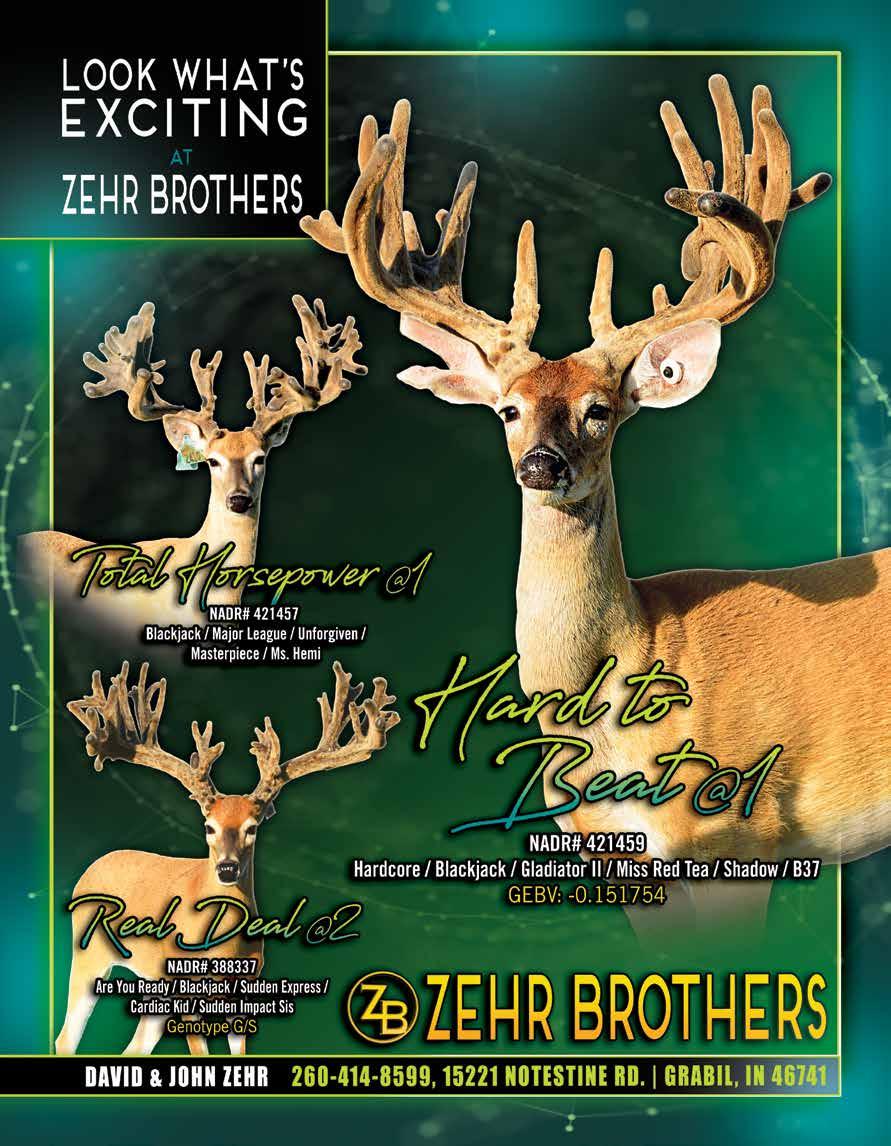
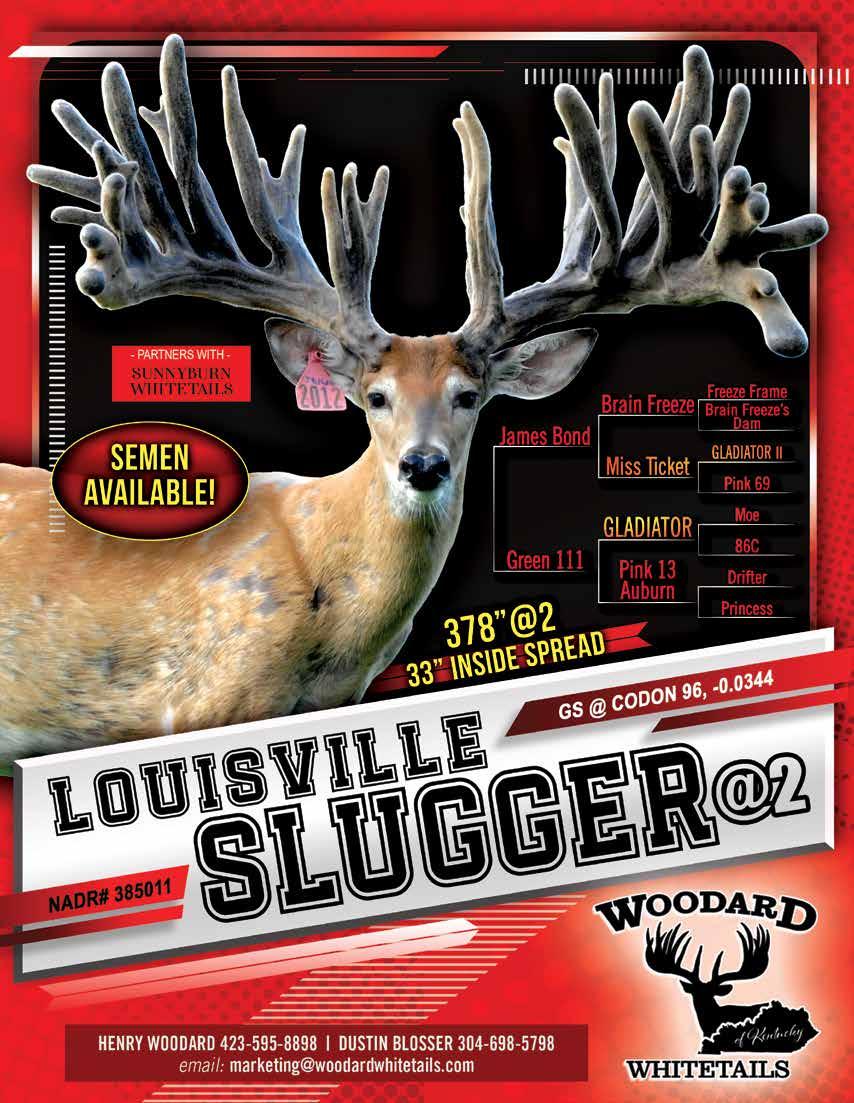
By: Gail Veley • Sponsored by The Kentucky Alternative Livestock Association
As your deer herd grows in number, it becomes increasingly more important to keep them organized through the use of ear tags. In a farm setting, ear tags are typically used to help monitor disease, maintain accurate health, movement and sale records, establish potential research protocols and breeding programs. Using specific colored and numbered ear tags could also “help you keep track of which bucks your deer were produced from,” offers Dustin Blosser, manager since 2021 of Woodard Whitetails in Glasgow, Kentucky. “It’s also a very good way to make sure age classes are in order. While each farm has different ways of doing it, it’s important that it’s done accurately.”
Assessing accurate population trends, survival rates and utilizing proficient management strategies can be several reasons wildlife agencies use ear tags. Tags can come in the form of metal, plastic, scanned electronic identification (EID) tags or even Passive Integrated Transponder (PIT) microchip tags. PIT tags, commonly used by various wildlife agencies, are transplanted under the skin and only activated when a deer passes close by to a specialized antenna and later, accounted for via computer records.
However, deer farmers rely on easyto-read highly visible ear tags as it

makes going through your inventory and finding a deer much faster and easier, Blosser, 26, said. “You don’t realize at first how you might start memorizing tag numbers and which deer are which. Someone rattled off “4012” and I knew what pen this doe was in, and who her parents were right off the top of my head.”
With fawns, smaller, temporary tags are typically attached and subsequently changed out after two months of age for an official farm tag. Blosser recommends using an ear tag clearly visible to the naked eye which can be read in a mere few seconds if necessary. “With our farm tags, the color changes to coincide with the year they were born. We have their number on one side and put our farm name and the sire and dam’s name on the other side. It’s good for farm tours and in letting people know right away about their pedigree. We also use four digits. Tags used this year start with “4” which stands for 2024. With our bucks we put a “B” at the end of the number and attach the tag in their right ear and attach the doe tags in the left ear. It’s really important to pay attention to whether it’s a buck or doe when you’re tagging. Seems like every year we have an intern that gets one or two wrong.”
Rather than just using numbers, ear tags are also available with letters

that (given there are 26 letters in the alphabet) can span over a much longer interval of time compared to numbers. Each farm ear tag should also be accompanied by a mandatory state “premise I.D.” Department of Agriculture tag. Although both can be placed in the same ear, Blosser recommends putting them in opposite ears to avoid potentially losing both should an ear, for example, get stuck in a fence. Likewise, it’s important to invest in fade resistant and very thick durable tags, as deer tend to chew on them. Adding more minerals to their feed is thought to help prevent this from happening, according to research.
Ultimately, an ear tag could help a hunter make a split-second decision, as farm tags get replaced with preserve tags when stocker deer are sold. “If you know what a certain color tag costs, then you can be better prepared when that perfect buck shows up,” Blosser said. “You have the ability to make that splitsecond decision, if need be, and take home the trophy you’ve always wanted.”

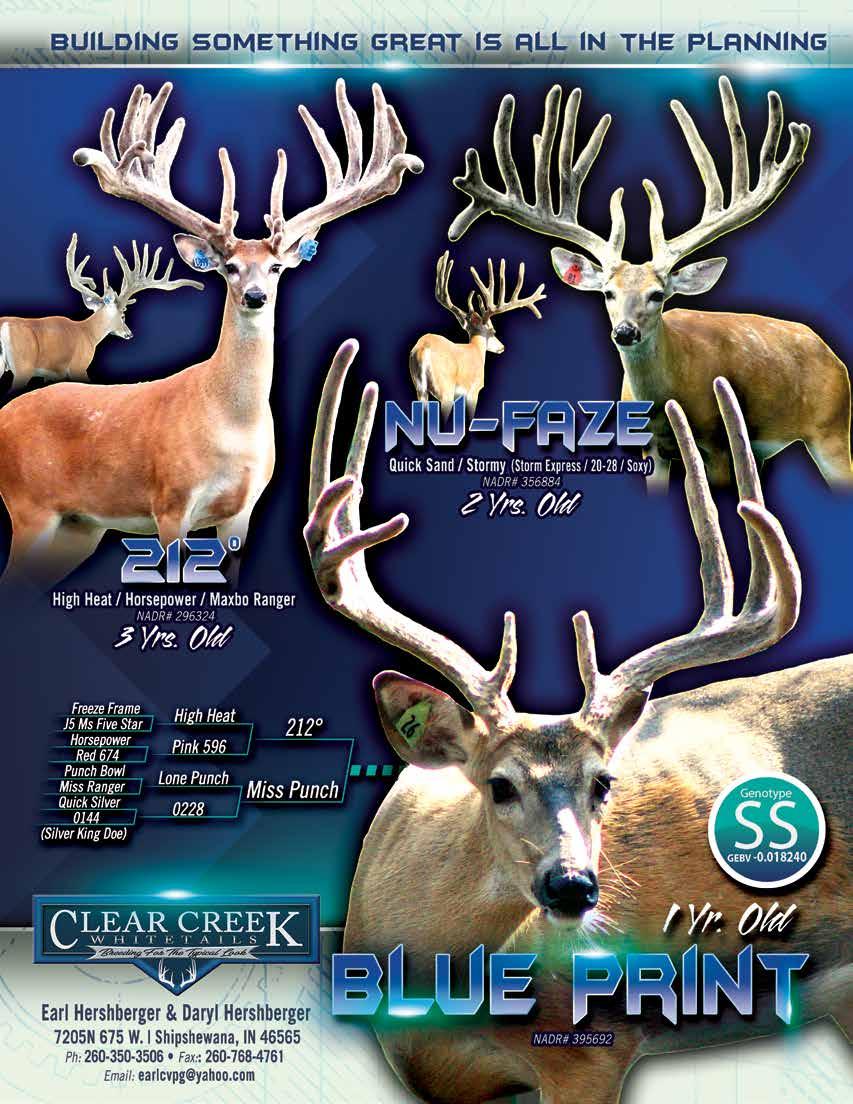









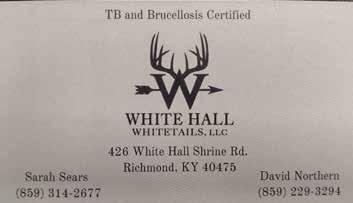

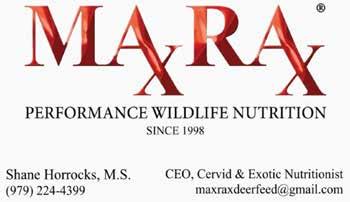


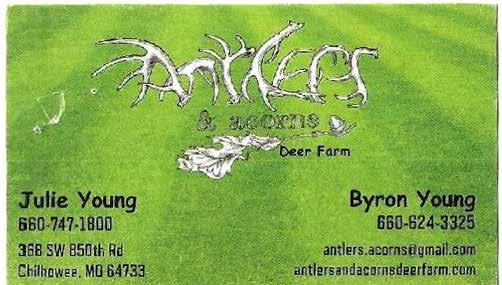


By: Gail Veley • Sponsored by UDFOM
Kenny Brown fixed his rifle scope on the large cat high in a tree. Over the pounding of his own heart, piercing rush of adrenaline and frenzied barking of hounds, he could hear his guide telling him “Take your shot!! Take your shot now!” A twig snapped. He fired. And in an instant the hunter became the hunted as a 163-pound mountain lion came intentionally cascading down on top of the two men. As both jumped and struggled themselves out the way, the cat landed ten feet from them and raced off, it’s now obliterated and bloody paw leaving a trail. “Go! Go,” the guide called out. Brown, then 42, sprinted as fast as his legs could carry him, even falling, knocking the wind out of himself as he traversed back down through the steep snow at 7,000 feet, the same mountain he had just spent the better part of two hours crawling up. Panting hard, he once again found his target, now unable to tree itself yet still in full defense mode. As the dogs circled and barked, the cat lunged, grabbing one dog square on the head. Instantly, another dog bit the cat on the rump, causing it to let go and spin. Brown reacted in the microsecond it took for his finger to pull the trigger. And fired. The cat was down. Done.
Brown, now able to release every bottled-up emotion, cried. Cried from physical pain. From relief. From satisfaction. Satisfaction that was now interrupted by another urgent matter. Romey, the dog seized by the mountain lion, was bleeding badly and needed urgent vet care. “We’ve got to get him to the vet,” the guide said, with a tone far different than the one used earlier to order a gunshot. Brown jumped up, grabbed Romey and literally slid on his buttocks further down the side of the mountain, landing in a creek next to
a road, where vehicles were waiting. Romey survived. It was a welcomed ending to a hunt in St. Mary’s Idaho, that brought two treasures for Brown, a 92-pound gray timber wolf and a mountain lion. The mountain lion was found on a hunch. The timber wolf was found after spotting a moose kill.
“I’ve always been an avid hunter,” Brown said. “Growing up I did rabbit hunts and whitetail hunts and then took a liking to hunting the predator side. I always wanted to shoot a wolf and spent a week in Canada to no avail.” However, Brown’s dream would become reality on that St. Mary’s, Idaho hunt, preceding the mountain lion hunt. On the hunt “this wolf looked right through me. Right through my soul,” Brown recalled of the day he lay in wait, letting out an occasional answered howl that eventually found him able to take successful aim. “While I was in Canada, I learned how to call the wolves and let out a howl,” Brown shared. “I waited ten minutes and howled again. This time, I had a couple howl back at me. And when they wouldn’t howl back and didn’t howl back, I knew they were coming to check me out. They were coming.”
After Brown’s successful wolf harvest, fellow hunters at base camp helped gather up and bring the wolf back. While Brown has yet to ever hunt a wolf or mountain lion again, the memories remain etched in his soul. From the thrill and adrenaline to the camaraderie shared among hunters, this is what drives the sport. This is the very backbone of what hunting preserves provide to those who are also in search of their treasure, just the same way Brown, owner of PR Whitetails in Leslie, Michigan was. “Recently I had the joy of being asked to help cook at Ultimate Whitetails for a large gathering of hunters,” Brown shared. “I’ve always enjoyed cooking. For three days I hung out with guides and got to see the sights. But there was one guy I’ll always remember. He shot a huge nontypical deer. As he’s telling the story he’s got tears in his eyes. I thought to myself ‘that’s awesome.’ This was his life dream. He was thrilled. Here’s an honest hardworking guy able to enjoy the thrill of the hunt and connect with others who share a love of nature. Opportunities like these might only come once in a lifetime. I’m grateful the deer industry can provide that.”


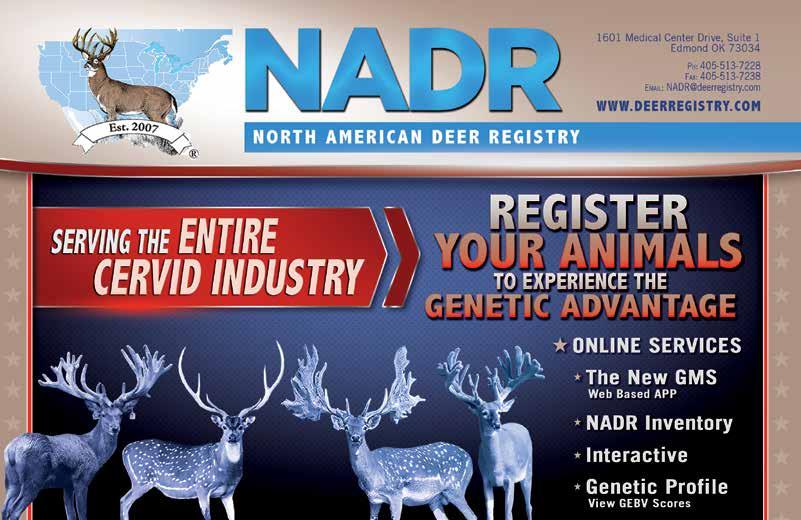

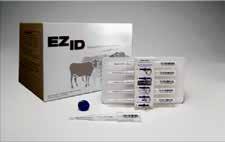








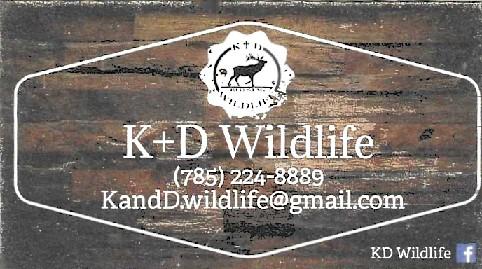
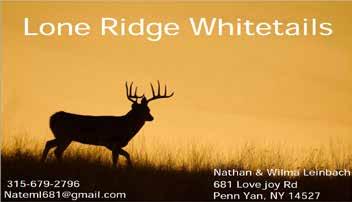



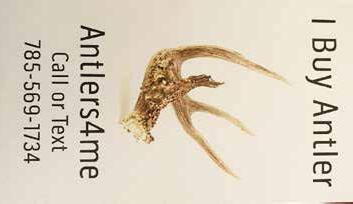



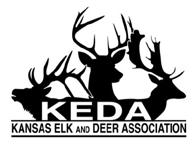
July 1, 2023 - June 30, 2024
Registration/Renewal form
Name:___________________________________________________________________
Ranch/ Farm Name:___________________________________________________________
Address: _________________________
City/State/Zip_________________________________________________________________ Phone:_______________________________________________________________________
Email:____________________________________________
How many elk do you own?___________________________________________________
How many deer and what species?___________________________________
How many acres of high fence?______ Do you AI your elk or deer?________
Do you own a hunting preserve?______ If yes, how many animals harvested a year?_______
Do you sell elk and/or deer products at local farmers markets?________
Do you harvest velvet antler? ________
Are you enrolled in the voluntary CWD Monitoring Program?________
Circle membership type:
Voting member: $50 annually, full voting rights, must own elk or deer in Kansas
Associate member: $25 annually, nonvoting (not open to elk or deer owners in Kansas)
Dues payable to: Kansas Elk & Deer Association 825 S. Kansas Ave; Suite 500 Topeka, KS 66612
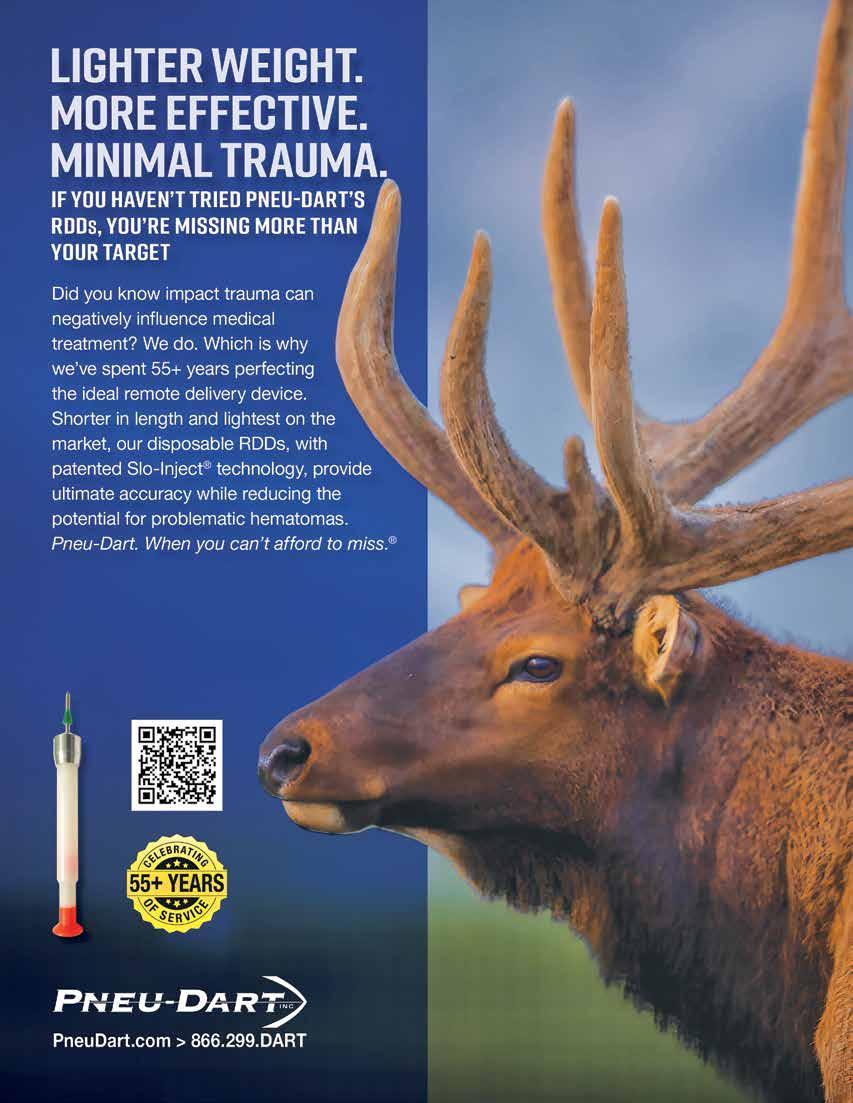

• Alabama Deer Association
• Illinois Deer Farmers
• Indiana Deer And Elk Farmers Association
• Iowa Whitetail Deer Association
• Kansas Elk and Deer Association
• Kentucky Alternative Livestock Association
• Minnesota Deer Association
Package: *
44 ISSUES FOR 1 YR.
Reaching out to over 2500 members (11 Publications x 4 quarters)
17 State Associations - Approx. 2500 readers
$189 / Issue ($8316. / Yr) ~ Full Page
$107 / Issue ($4708. / Yr.) ~ Half Page
(55-59% Discount off single ad placement)
4 ISSUES FOR 1 YR.
(1 Publication x 4 quarters)
$252/ Issue ($1008. / Yr) ~ Full Page

• Missouri Deer Association
• New York Deer and Elk Farmers Association
• North Dakota Deer Ranchers
• North Carolina Deer Farmers Association
• Pennsylvania Deer Farmers Association
• South Dakota Deer & Elk Breeders
• Southeast Trophy Deer Association

• Texas Deer Association
• United Deer Farmers of Michigan
• West Virginia Deer Farmers Association
• Whitetail Deer Farmers of Ohio
• Whitetails of Louisiana
• Whitetails of Oklahoma
*
16 ISSUES FOR 1 YR.
(4 Publications of your choice x 4 quarters)
$220 / Issue ($3520. / Yr) ~ Full Page
$121 / Issue ($1936. / Yr.) ~ Half Page (48-54% Discount off single ad placement)

$137 / Issue ($548. / Yr.) ~ Half Page (40-48% Discount off single ad placement)

Single Issue In Any Of Our Eleven State Publications: Full Page: $420.00 1/2 Page: $263.00



Package Add On *
TEXAS DEER ASSOCIATION MAGAZINES
4 ISSUES FOR 1 YR. (Can be added to Buckaneer or Doe-Re-Mi package) Reaching out to over 800 TDA members
(3 Tracks Publications & 1 Auction Catalog)
$428 / Issue ($1712. / Yr) ~ Full Page
$267/ Issue ($1068. / Yr.) ~ Half Page (55-59% Discount off single ad placement)
Single Issue In TDA Publications:
Two Page: $1500. One Page: $950 1/2 Page: $650






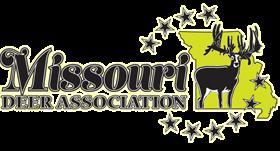







ENHANCED WITH APPETITE STIMULANTS & PROBIOTICS!







™


















DESIGNED TO HELP INCREASE YOUR PEACE OF MIND... WHEN YOU NEED IT MOST!

Rut and reduced feed intakes can bring out the worst in bucks and irritable behavior can rear it’s ugly head!
PeaceMaker is scientifically formulated to provide optimal support levels of magnesium, Vitamin B1 and inositol to help maintain a normal and relaxed disposition in cervids
Now enhanced with appetite stimulants and probiotics for digestive health
Contains no herbals nor tryptophan, eliminating concerns of unwanted side effects
Use PeaceMaker™ to help “keep the peace” during pre-rut, rut, transportation and other key times during the year
Now available in a 30 lb resealable bag and 11.25 lb pail to help fit your operation’s needs

ROBUST, FAST GI SUPPORT FOR FAWNS & OLDER DEER

Designed to quickly support normal GI health
Novel formula delivers powerful immune support
Can be used post tranquilization to help speed recovery












DIGESTIVE HEALTH & IMMUNE SUPPORT CERVIDS OF ALL AGES

Supports digestive health and a healthy immune system
Natural formula contains Encrypt®, egg proteins, enzymes, micro-encapsulated probiotics and a prebiotic
Top dress or mix in feed during fawning season, weather changes, times of stress and when top performance is desired





